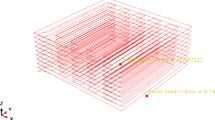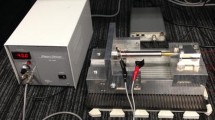Abstract
Using a time series model, we constructed a disturbance model for the aluminum sputter deposition process, and derived an autoregressive integrated moving average and recursive least-squares (ARIMA-RLS) controller based on this new disturbance model. Experimental results revealed that the ARI(3,1) model appropriately characterized the dynamic behavior of the disturbance for this process. The ARIMA-RLS controller, which includes information on process noise, is able to automatically regulate the model coefficients as the target is replaced or degrades. In this paper, the d-EWMA controller, the age-based d-EWMA controller, and the ARIMA-RLS controller were applied to aluminum sputter deposition processes in order to predict deposition rates and compare their performances. Application of the ARIMA-RLS controller is proven herein to significantly improve the estimation accuracy of the aluminum sputter deposition process, regardless of whether or not deposition rates are measured for each run.
Similar content being viewed by others
References
Spanos CJ, Guo HF, Miller A, Joanne LP (1992) Real-time statistical process control using tool data. IEEE Trans Semicond Manuf 5:308–318
Sachs E, Guo RS, Ha S, Hu A (1991) Process control system for VLSI fabrication. IEEE Trans Semicond Manuf 4:134–144
Sachs E, Hu A, Ingolfsson A (1995) Run by run process control: combining SPC and feedback control. IEEE Trans Semicond Manuf 8:26–43
Smith TH, Boing DS (1997) A self-tuning EWMA controller utilizing artificial neural network function approximation techniques. IEEE Trans Compon Packag Manuf Technol C* 20:121–132
Guo RS, Chen JJ, Chen A, Lu SS (1999) A self-tuning run-by-run process controller for processes subject to random disturbances. J Chin Inst Eng 22:627–638
Tseng ST, Yeh B, Tsung F, Chan YY (2003) A study of variable EWMA controller. IEEE Trans Semicond Manuf 16:633–643
Hsu CC, Su CT (2004) A neural network-based adaptive algorithm on the single EWMA controller. Int J Adv Manuf Technol 23:586–593
Butler SW, Stefani JA (1994) Supervisory run-to-run control of polysilicon gate etch using in situ ellipsometry. IEEE Trans Semicond Manuf 7:193–201
Sattler L, Hecker PE (1998) Reducing cost and increasing throughput using model-based process control on sputtering system. IEEE/CPMT international electronics manufacturing technology symposium, Austin, USA, pp 409–414
Guo RS, Chen A, Chen JJ (2000) Run-to-run control schemes for CMP process subject to deterministic drifts. Semiconductor manufacturing technology workshop, Hsinchu, Taiwan, ROC, pp 251–258
Chen A, Guo RS (2001) Age-based double EWMA controller and its application to CMP process. IEEE Trans Semicond Manuf 14:11–19
Tseng ST, Song W, Chang YC (2005) An initial intercept iteratively adjust (IIIA) controller: an enhanced double EWMA feedback control scheme. IEEE Trans Semicond Manuf 18:448–457
Tseng ST, Chou RJ, Lee SP (2002) A study on a multivariate EWMA controller. IIE Trans 34:541–549
Del Castillo E, Rajagopal R (2002) A multivariate double EWMA process adjustment scheme for drifting process. IIE Trans 34:1055–1068
Yang L, Sheu SH (2006) Integrating multivariate engineering process control and multivariate statistical control. Int J Adv Manuf Technol 29:129–136
Wang GJ, Yu CH (2006) Developing a neural network-based run-to-run process controller for chemical-mechanical planarization. Int J Adv Manuf Technol 28:899–908
Smith TH, Boning DS, Stefani J, Butler SW (1998) Run by run advanced process control of metal sputter deposition. IEEE Trans Semicond Manuf 11:276–284
Box GEP, Jenkins GM, Reinsel GC (1994) Time series analysis forecasting and control. Prentice-Hall, Englewood Cliffs, NJ
Fung EHK, Chung APL (1999) Using ARMA models to forecast workpiece roundness error in a turning operation. Appl Math Model 23:567–585
Young P (1984) Recursive estimation and time-series analysis. Springer, Berlin Heidelberg New York
Liung L, Soderstrom T (1986) Theory and practice of recursive identification. MIT Press, Cambridge, MA
Graupe D (1989) Time series analysis, identification and adaptive filtering. Krieger, Malabar, FL
Author information
Authors and Affiliations
Corresponding author
Rights and permissions
About this article
Cite this article
Chen, JH., Kuo, TW. & Chen, TC. Advanced process control of metal sputter deposition using a time series analysis. Int J Adv Manuf Technol 36, 501–509 (2008). https://doi.org/10.1007/s00170-006-0864-0
Received:
Accepted:
Published:
Issue Date:
DOI: https://doi.org/10.1007/s00170-006-0864-0




